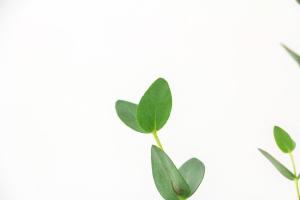Introduction
As we continue to witness the harmful effects of pollution on our planet, it's important to understand the ways in which plants and trees play an essential role in reducing pollution. In this article, we'll explore the various ways in which plants and trees help to combat pollution and create a healthier environment for all living things.
Reducing Air Pollution
One of the most significant ways in which plants and trees help to reduce pollution is by absorbing harmful gases and pollutants from the air. This process, known as photosynthesis, allows plants and trees to convert carbon dioxide into oxygen, which in turn helps to purify the air we breathe. Additionally, plants and trees also absorb pollutants like nitrogen oxides, sulfur dioxide, and particulate matter, all of which can have harmful effects on human health.
Reducing Water Pollution
Plants and trees also play an important role in reducing water pollution. They help to filter pollutants out of water as it passes through their roots and into the soil. Trees, in particular, are effective at preventing soil erosion and minimizing the risk of runoff, which can carry pollutants into nearby streams and rivers. Additionally, plants can absorb excess nutrients like nitrogen and phosphorous, which are often responsible for causing harmful algal blooms and other water quality issues.
Creating Healthy Habitats
By providing a healthy and diverse habitat for wildlife, plants and trees can also help to reduce pollution. By creating forests, wetlands, and other ecosystems, they can support biodiversity and balance entire ecosystems. This can help limit the spread of invasive species, prevent soil erosion, and provide habitats for a wide range of species, from insects and birds to larger mammals.
Improving Human Health
Finally, plants and trees can also have a direct impact on human health. Trees, in particular, are known to promote mental and emotional health and can reduce stress levels in urban environments. Additionally, studies have shown that living in close proximity to green spaces can improve respiratory health and reduce the risk of a range of health issues, including obesity, diabetes, and cardiovascular disease.
Conclusion
As we continue to face the challenges of pollution and environmental degradation, it's clear that plants and trees will play a vital role in creating a healthier planet. Whether by absorbing pollutants from the air and water, providing habitats for wildlife, or improving human health, these important natural resources are essential to our well-being and that of the planet as a whole.

 how many times do yo...
how many times do yo... how many planted tre...
how many planted tre... how many pine trees ...
how many pine trees ... how many pecan trees...
how many pecan trees... how many plants comp...
how many plants comp... how many plants can ...
how many plants can ... how many plants and ...
how many plants and ... how many pepper plan...
how many pepper plan...






























